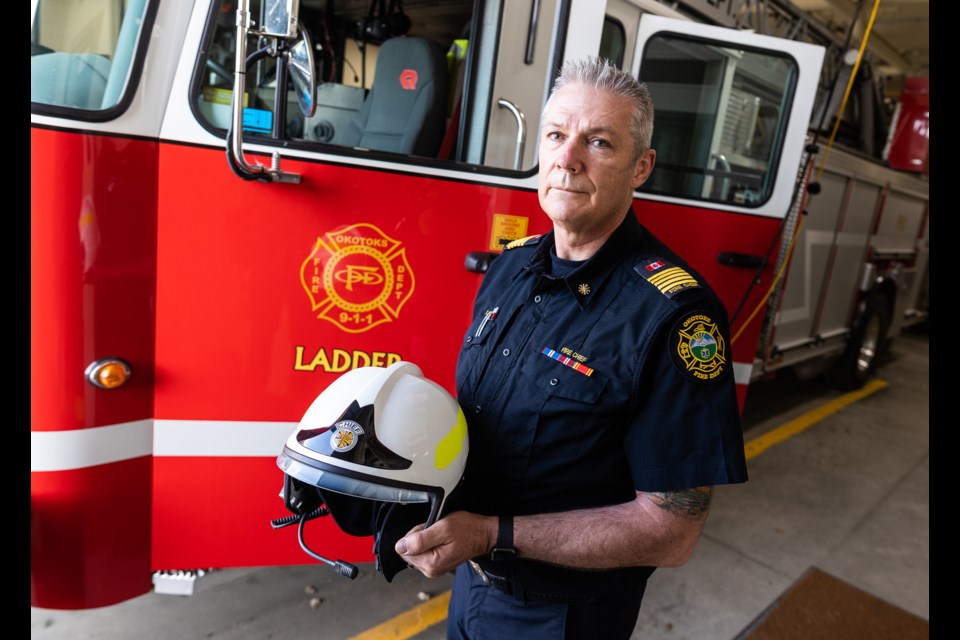Okotoks firefighters have been sporting a new look over the past few months.
When Okotoks Fire Chief Trevor Brice assumed his position in August, he looked at the traditional helmets,and although iconic to firefighting, he decided to opt for function over form.
The department made the switch to the new Cairns XF1 by MSI, known as a “jet-style” helmet in firefighting last December.
“My mantra has really been ‘safety is our number one priority’, and that really is keeping our firefighters safe, while we keep the community safe,” Brice said. “These helmets, in my opinion, are a lot safer than the ones that we were using.”
The helmets feature advancements not only in terms of shape, he added, but also technology and wearability.
“It's a newer technology, it's a massive change in terms of the iconic helmets that people are sort of used to," he said.
“Unfortunately, those (older) helmets are very uncomfortable.”
The new helmets feature built in radio headsets, flashlights, and larger protective visor and face shield.
The style, more predominant in the UK and Europe, is starting to see adoption in North America, starting in smaller halls which can shift easier, Brice said.
Having worked in firefighting in the UK for 10 years before taking up his trade in Saskatchewan in 2010, he was familiar with the design.
In Canadian fire halls, however, the design did get poked fun at as the new gear was adopted.
“For me, it's about ‘you look good, or you’re safe,’ and these helmets make you a lot safer,” he said. “When I first brought it here some of the firefighters looked at it and it was all about what it looked like, but as soon as people put them on, we did some trials here and got some really good feedback.”
Okotoks firefighter Bob Button agreed he and his teammates shared a chuckle about the look, but took to the helmets quickly when they found how comfortable they were.
“Although it initially appears to be kind of big, bulky, and goofy looking, the bottom line is it wears better for weight distribution,” Button said.
“You don’t have the same neck strain.
“For the firefighter functioning world, it's far, far better for us to use, because it has less things to catch on in confined spaces.”
The old helmets, by Button’s comparison, presented many edges and points to catch on both debris and a firefighter’s own equipment, like the tanks and valves of the breathing apparatus, as well as when breaching walls.
The XF1 doesn't sport the large front facing ridge or flat panel back.
“It's like trying to fit a square peg into a round hole, it's not going to work,” Button said.
He finds the new helmets sleeker and closer-fitting.
“You're not having to twist and turn your head around to get the square edges on the helmet to fit through the hole,” he added.
Brice said the crews are appreciating the ability to not have to take their helmets off at emergency scenes to rest their neck.
“At any longer duration incidents, they’re not having to take their helmet off as often,” he said.
In cases such as motor vehicle collisions where they may have to work inside a car, he said, they’re not as likely to need to remove their helmet to fit.
The new helmets are priced lower than the old style, Brice added, and the department was able to get a scale discount, running $23,000 for 50 units.




